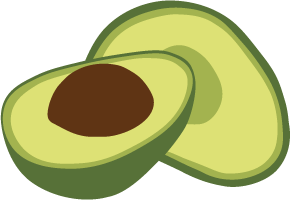ArangoDB v3.4 reached End of Life (EOL) and is no longer supported.
This documentation is outdated. Please see the most recent version here: Latest Docs
GraphEdgeCollection API
The GraphEdgeCollection API extends the Collection API with the following methods.
graphEdgeCollection.remove
async graphEdgeCollection.remove(documentHandle): Object
Deletes the edge with the given documentHandle from the collection.
Arguments
-
documentHandle:
stringThe handle of the edge to retrieve. This can be either the
_idor the_keyof an edge in the collection, or an edge (i.e. an object with an_idor_keyproperty).
Examples
const graph = db.graph("some-graph");
const collection = graph.edgeCollection("edges");
await collection.remove("some-key");
// document 'edges/some-key' no longer exists
// -- or --
await collection.remove("edges/some-key");
// document 'edges/some-key' no longer exists
graphEdgeCollection.documentExists
async graphEdgeCollection.documentExists(documentHandle): boolean
Checks whether the edge with the given documentHandle exists.
Arguments
-
documentHandle:
stringThe handle of the edge to retrieve. This can be either the
_idor the_keyof a edge in the collection, or an edge (i.e. an object with an_idor_keyproperty).
Examples
const graph = db.graph("some-graph");
const collection = graph.edgeCollection("edges");
const exists = await collection.documentExists("some-key");
if (exists === false) {
// the edge does not exist
}
graphEdgeCollection.document
async graphEdgeCollection.document(documentHandle, [opts]): Object
Alias: graphEdgeCollection.edge.
Retrieves the edge with the given documentHandle from the collection.
Arguments
-
documentHandle:
stringThe handle of the edge to retrieve. This can be either the
_idor the_keyof an edge in the collection, or an edge (i.e. an object with an_idor_keyproperty). -
opts:
Object(optional)If opts is set, it must be an object with any of the following properties:
-
graceful:
boolean(Default:false)If set to
true, the method will returnnullinstead of throwing an error if the edge does not exist. -
allowDirtyRead:
boolean(Default:false)This option is only available when targeting ArangoDB 3.4 or later, see Compatibility.
If set to
true, the request will explicitly permit ArangoDB to return a potentially dirty or stale result and arangojs will load balance the request without distinguishing between leaders and followers.
-
If a boolean is passed instead of an options object, it will be interpreted as the graceful option.
Examples
const graph = db.graph("some-graph");
const collection = graph.edgeCollection("edges");
const edge = await collection.document("some-key");
// the edge exists
assert.equal(edge._key, "some-key");
assert.equal(edge._id, "edges/some-key");
// -- or --
const edge = await collection.document("edges/some-key");
// the edge exists
assert.equal(edge._key, "some-key");
assert.equal(edge._id, "edges/some-key");
// -- or --
const edge = await collection.document("some-key", true);
if (edge === null) {
// the edge does not exist
}
graphEdgeCollection.save
async graphEdgeCollection.save(data, [fromId, toId]): Object
Creates a new edge between the vertices fromId and toId with the given data.
Arguments
-
data:
ObjectThe data of the new edge. If fromId and toId are not specified, the data needs to contain the properties **from_ and **to_.
-
fromId:
string(optional)The handle of the start vertex of this edge. This can be either the
_idof a document in the database, the_keyof an edge in the collection, or a document (i.e. an object with an_idor_keyproperty). -
toId:
string(optional)The handle of the end vertex of this edge. This can be either the
_idof a document in the database, the_keyof an edge in the collection, or a document (i.e. an object with an_idor_keyproperty).
Examples
const db = new Database();
const graph = db.graph("some-graph");
const collection = graph.edgeCollection("edges");
const edge = await collection.save(
{ some: "data" },
"vertices/start-vertex",
"vertices/end-vertex"
);
assert.equal(edge._id, "edges/" + edge._key);
assert.equal(edge.some, "data");
assert.equal(edge._from, "vertices/start-vertex");
assert.equal(edge._to, "vertices/end-vertex");
graphEdgeCollection.edges
async graphEdgeCollection.edges(documentHandle): Array<Object>
Retrieves a list of all edges of the document with the given documentHandle.
Arguments
-
documentHandle:
stringThe handle of the document to retrieve the edges of. This can be either the
_idof a document in the database, the_keyof an edge in the collection, or a document (i.e. an object with an_idor_keyproperty).
Examples
const db = new Database();
const graph = db.graph("some-graph");
const collection = graph.edgeCollection("edges");
await collection.import([
["_key", "_from", "_to"],
["x", "vertices/a", "vertices/b"],
["y", "vertices/a", "vertices/c"],
["z", "vertices/d", "vertices/a"]
]);
const edges = await collection.edges("vertices/a");
assert.equal(edges.length, 3);
assert.deepEqual(edges.map(edge => edge._key), ["x", "y", "z"]);
graphEdgeCollection.inEdges
async graphEdgeCollection.inEdges(documentHandle): Array<Object>
Retrieves a list of all incoming edges of the document with the given documentHandle.
Arguments
-
documentHandle:
stringThe handle of the document to retrieve the edges of. This can be either the
_idof a document in the database, the_keyof an edge in the collection, or a document (i.e. an object with an_idor_keyproperty).
Examples
const db = new Database();
const graph = db.graph("some-graph");
const collection = graph.edgeCollection("edges");
await collection.import([
["_key", "_from", "_to"],
["x", "vertices/a", "vertices/b"],
["y", "vertices/a", "vertices/c"],
["z", "vertices/d", "vertices/a"]
]);
const edges = await collection.inEdges("vertices/a");
assert.equal(edges.length, 1);
assert.equal(edges[0]._key, "z");
graphEdgeCollection.outEdges
async graphEdgeCollection.outEdges(documentHandle): Array<Object>
Retrieves a list of all outgoing edges of the document with the given documentHandle.
Arguments
-
documentHandle:
stringThe handle of the document to retrieve the edges of. This can be either the
_idof a document in the database, the_keyof an edge in the collection, or a document (i.e. an object with an_idor_keyproperty).
Examples
const db = new Database();
const graph = db.graph("some-graph");
const collection = graph.edgeCollection("edges");
await collection.import([
["_key", "_from", "_to"],
["x", "vertices/a", "vertices/b"],
["y", "vertices/a", "vertices/c"],
["z", "vertices/d", "vertices/a"]
]);
const edges = await collection.outEdges("vertices/a");
assert.equal(edges.length, 2);
assert.deepEqual(edges.map(edge => edge._key), ["x", "y"]);
graphEdgeCollection.traversal
async graphEdgeCollection.traversal(startVertex, opts): Object
Performs a traversal starting from the given startVertex and following edges contained in this edge collection.
Arguments
-
startVertex:
stringThe handle of the start vertex. This can be either the
_idof a document in the database, the_keyof an edge in the collection, or a document (i.e. an object with an_idor_keyproperty). -
opts:
ObjectSee the HTTP API documentation for details on the additional arguments.
Please note that while opts.filter, opts.visitor, opts.init, opts.expander and opts.sort should be strings evaluating to well-formed JavaScript code, it’s not possible to pass in JavaScript functions directly because the code needs to be evaluated on the server and will be transmitted in plain text.
Examples
const db = new Database();
const graph = db.graph("some-graph");
const collection = graph.edgeCollection("edges");
await collection.import([
["_key", "_from", "_to"],
["x", "vertices/a", "vertices/b"],
["y", "vertices/b", "vertices/c"],
["z", "vertices/c", "vertices/d"]
]);
const result = await collection.traversal("vertices/a", {
direction: "outbound",
visitor: "result.vertices.push(vertex._key);",
init: "result.vertices = [];"
});
assert.deepEqual(result.vertices, ["a", "b", "c", "d"]);

